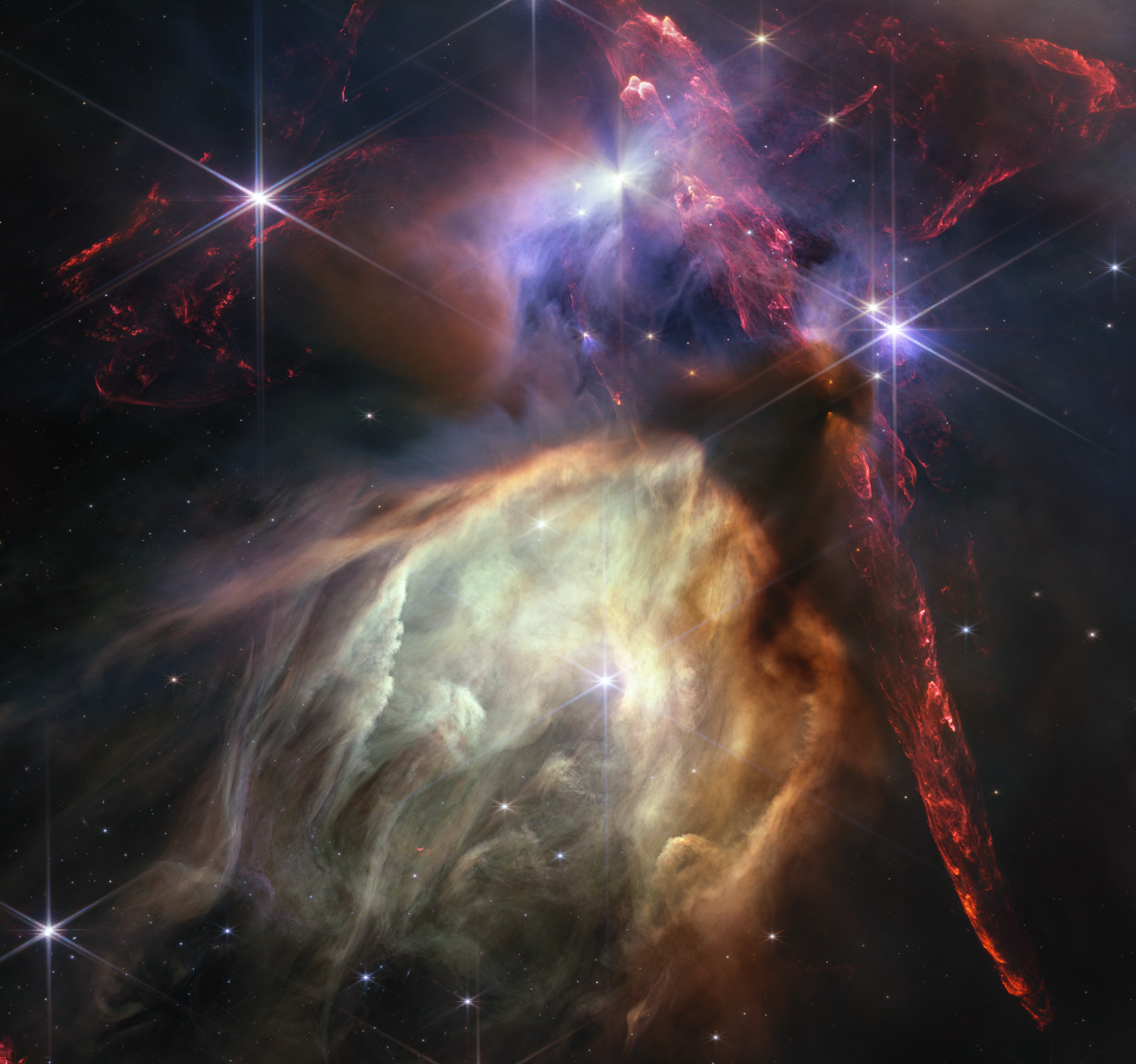To celebrate the one-year anniversary of the JWST a brand new image has been released of the closest star-forming region to Earth, capturing star birth in a way we have never seen before.
The JWST is the largest and most powerful telescope ever made. Launched into space on Christmas Day 2021 at a cost of around $10 billion dollars, it can peer further back in time than any other telescope to capture the formation of stars and planets, and even the birth of the first galaxies in the early universe. One year in and it has surpassed expectations – and this is just the beginning.
“In just one year, the James Webb Space Telescope has transformed humanity’s view of the cosmos, peering into dust clouds and seeing light from faraway corners of the universe for the very first time,” said NASA Administrator Bill Nelson. “Every new image is a new discovery, empowering scientists around the globe to ask and answer questions they once could never dream of.”

In this image, crisscrossing jets burst from young stars impacting the surrounding interstellar gas and lighting up molecular hydrogen (in red). Some stars show the telltale shadow of a circumstellar disk, where future planetary systems will form.
Image credit: NASA, ESA, CSA, STScI, Klaus Pontoppidan (STScI)
In this image you can see the Rho Ophiuchi cloud complex, the closest star-forming region to Earth. It’s actually a relatively small and quiet stellar nursery located just 390 light-years away, which allows for such a spectacularly detailed close-up image.
In the region shown there are around 50 young stars all with a mass similar to or smaller than our Sun. Huge jets of molecular hydrogen dominate the image, which occur when a star bursts through its baby envelope of cosmic dust and gives a biiiig stretch shooting out jets in opposite directions into space.
“Webb’s image of Rho Ophiuchi allows us to witness a very brief period in the stellar lifecycle with new clarity. Our own Sun experienced a phase like this, long ago, and now we have the technology to see the beginning of another’s star’s story,” said Klaus Pontoppidan, who was JWST project scientist at the Space Telescope Science Institute in Baltimore throughout the first year of operations.
From unprecedented views of the planets of the Solar System to JWST’s first Deep Field, this has been an incredible first year of science with discoveries that may change what we think we know about the universe.
“The breadth of science Webb is capable of exploring really becomes clear now, when we have a full year’s worth of data from targets across the sky,” said Eric Smith, JWST program scientist. “Webb’s first year of science has not only taught us new things about our universe, but it has revealed the capabilities of the telescope to be greater than our expectations, meaning future discoveries will be even more amazing.”
Congratulations to NASA, the European Space Agency, the Canadian Space Agency, and everyone involved, we can’t wait to see what comes next!
Source Link: JWST Celebrates First Year With Stunning Star Birth Like We’ve Never Seen Before